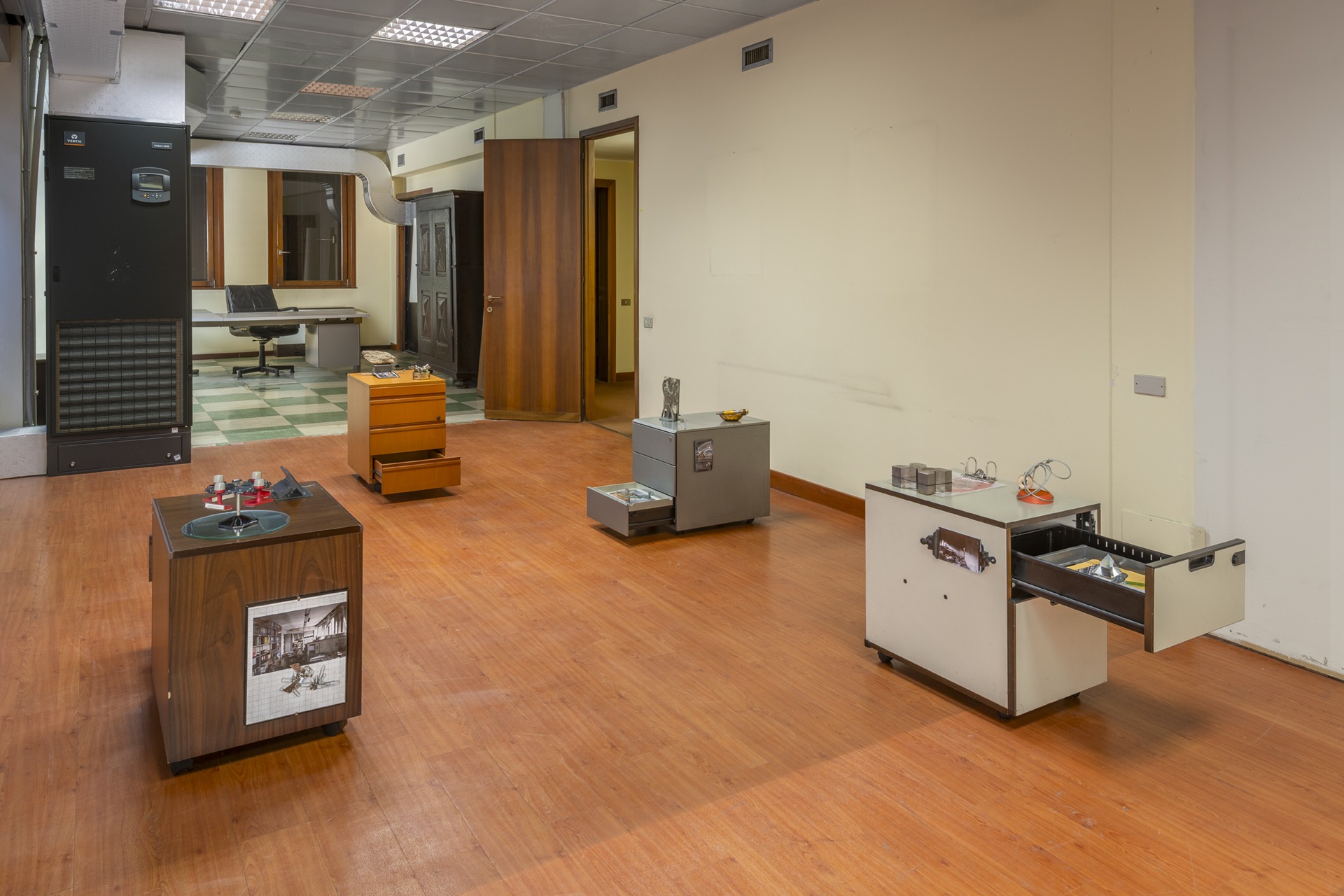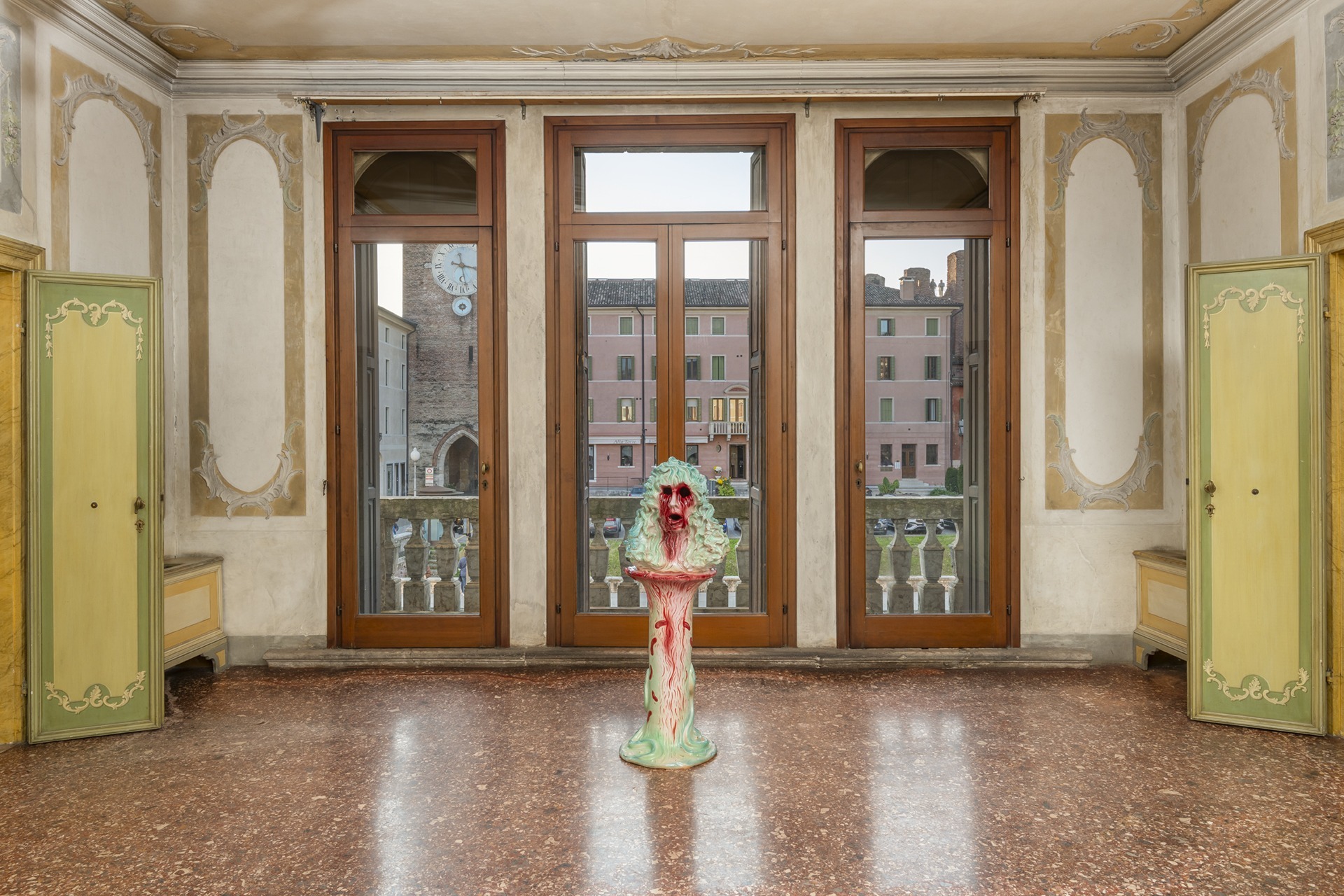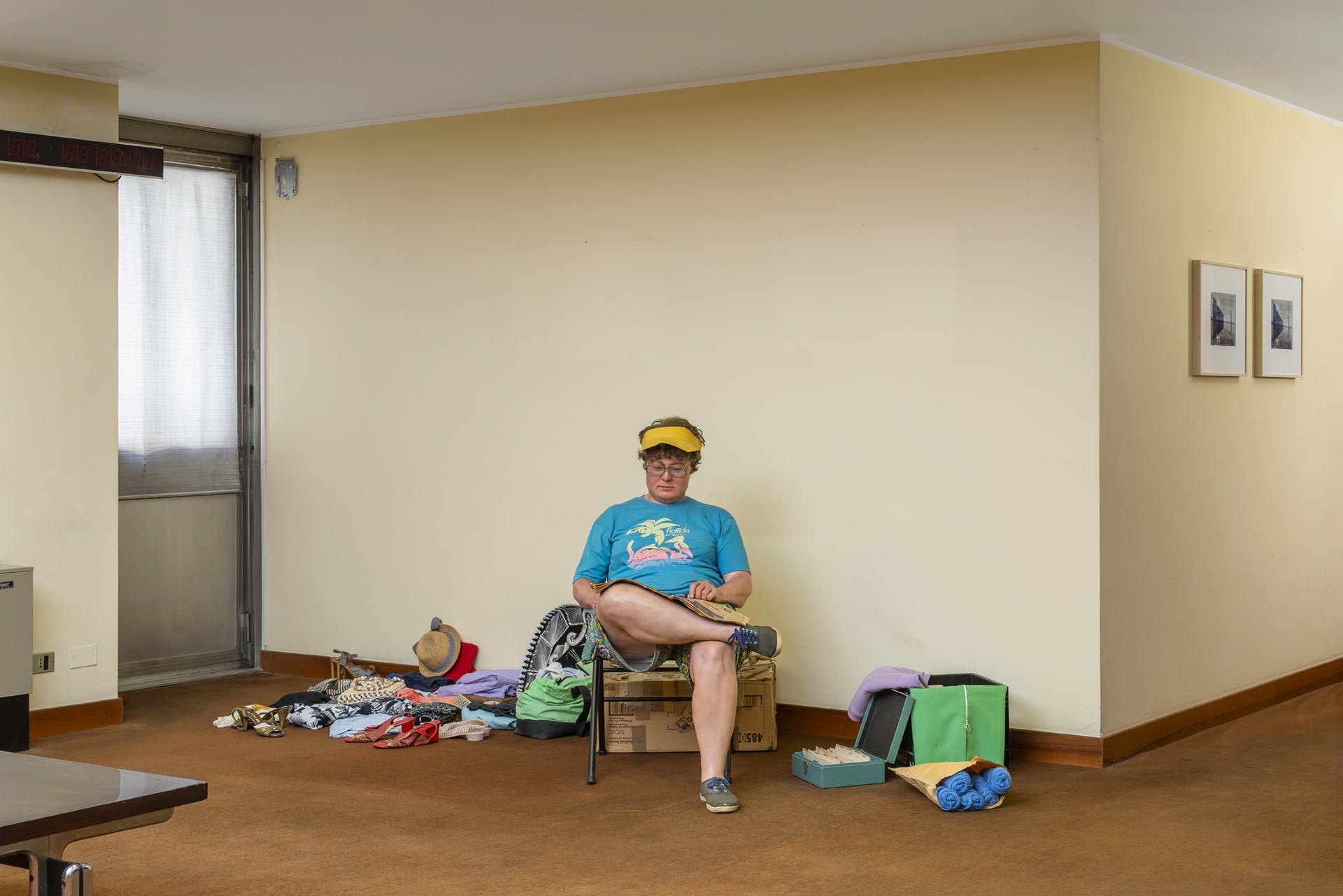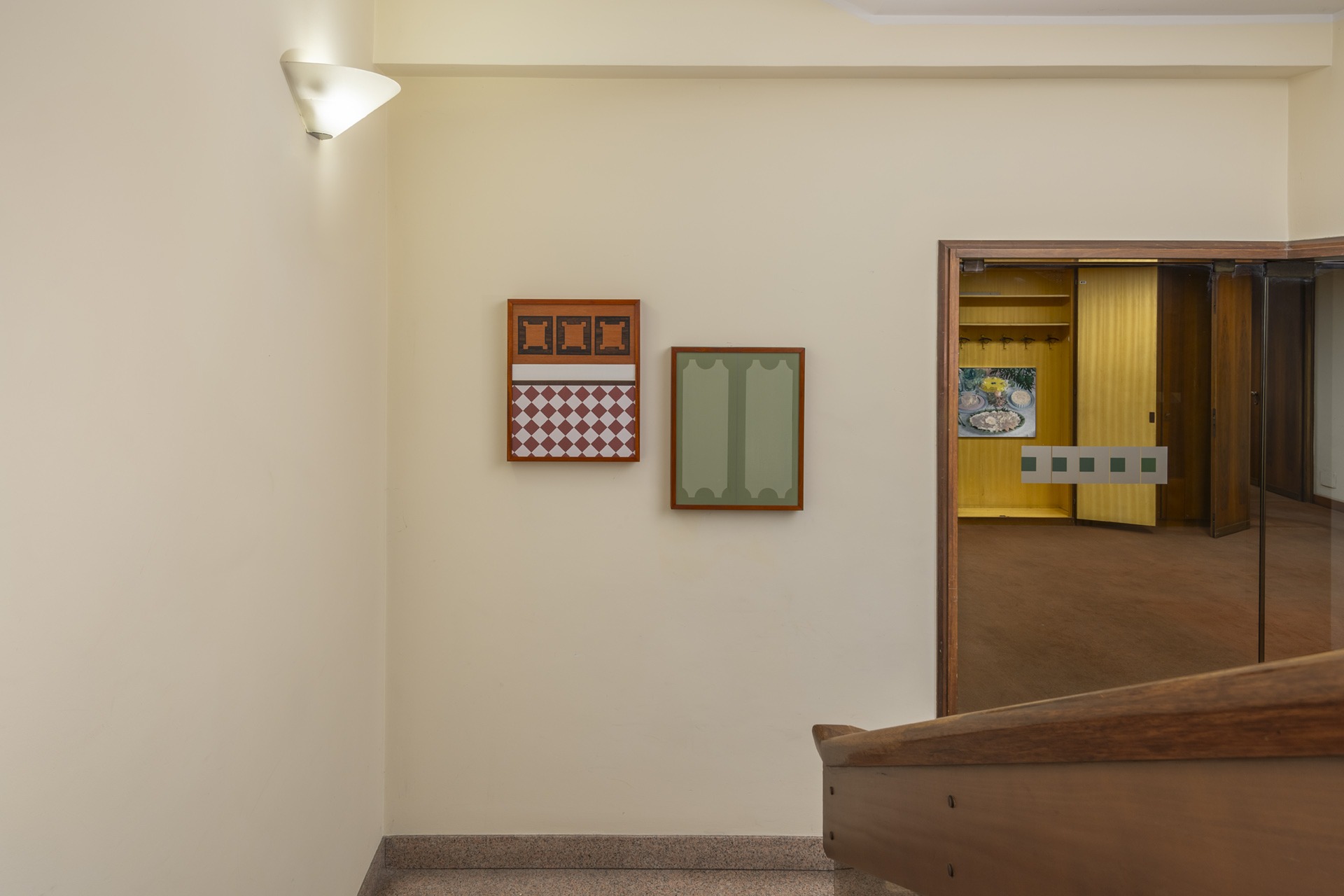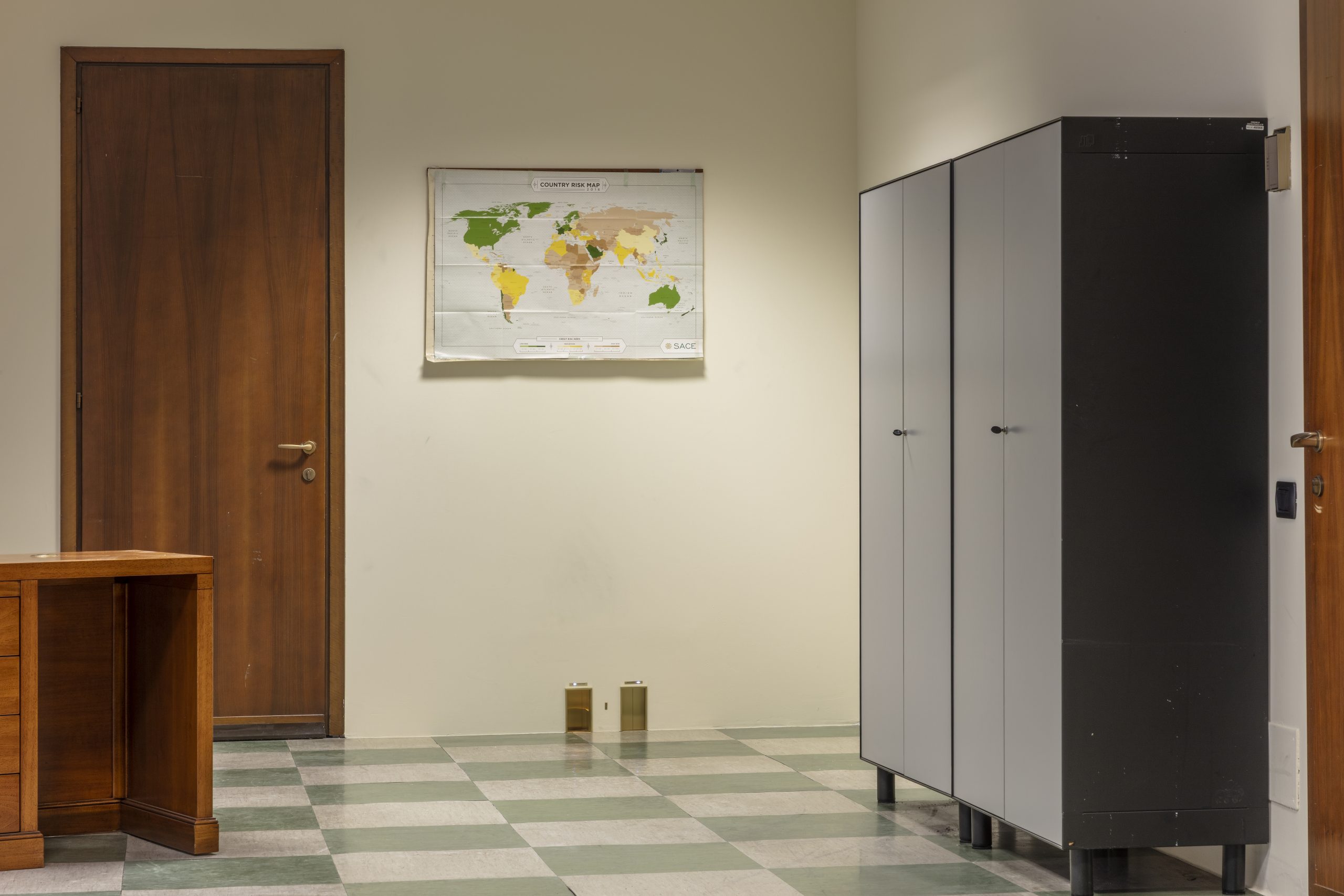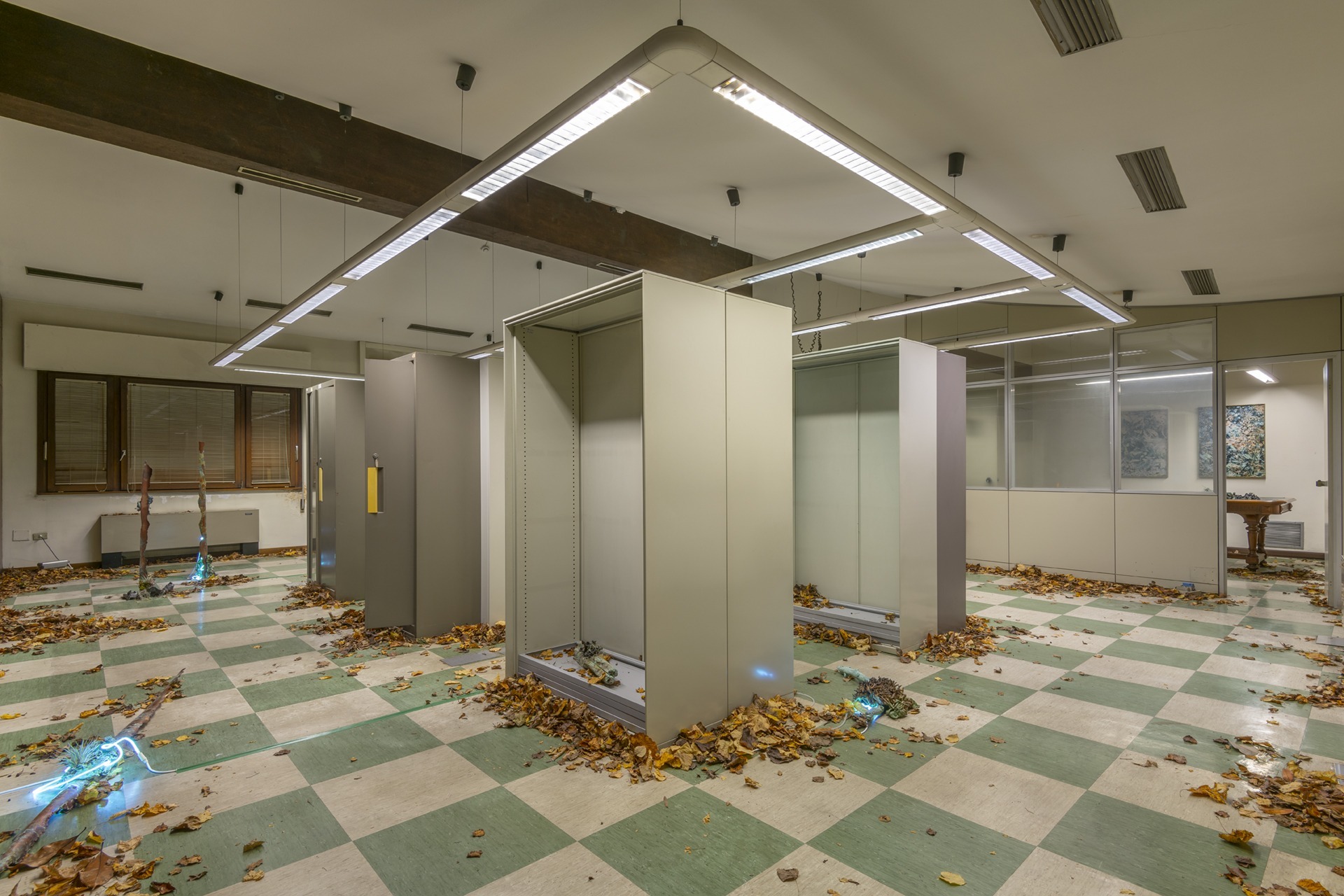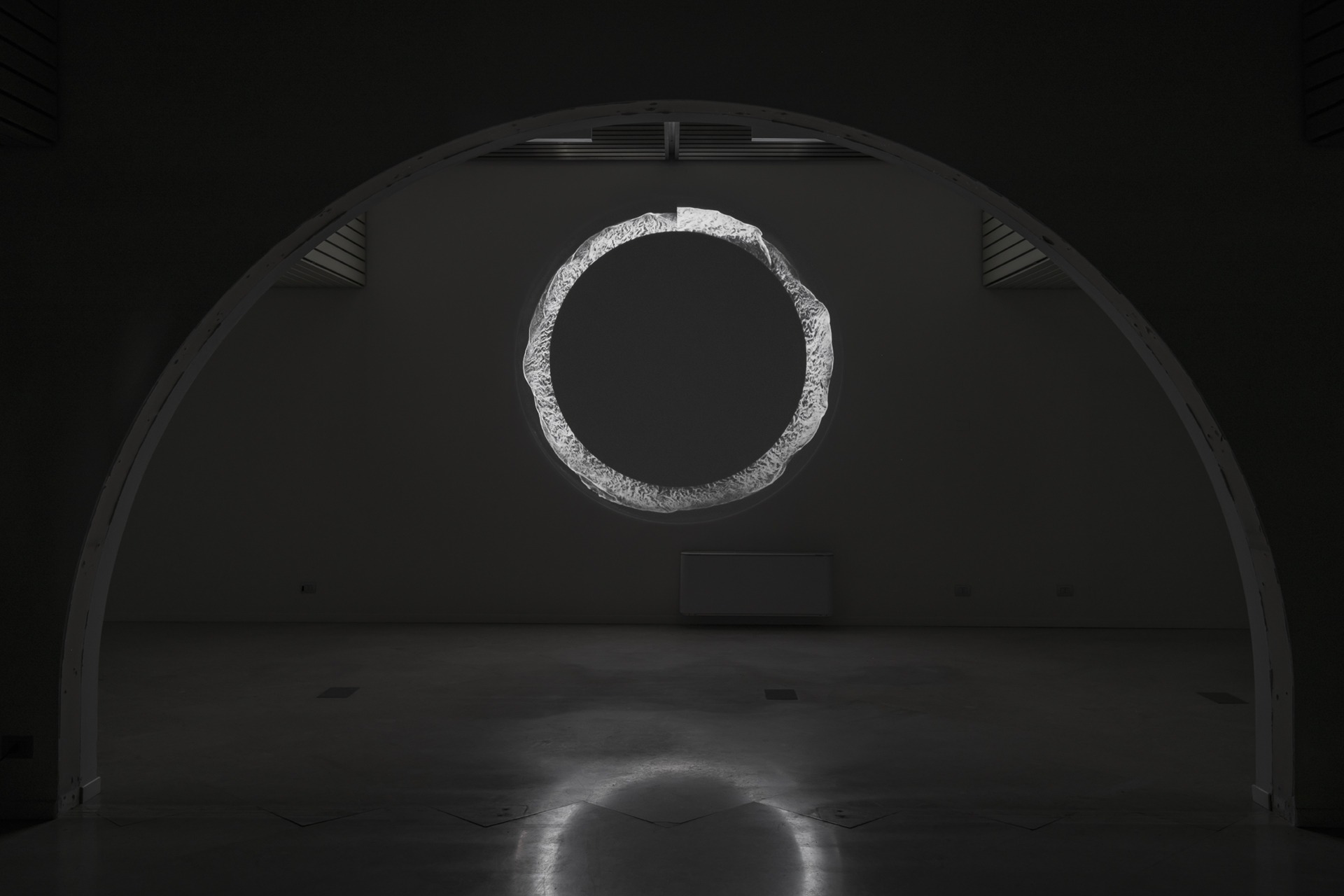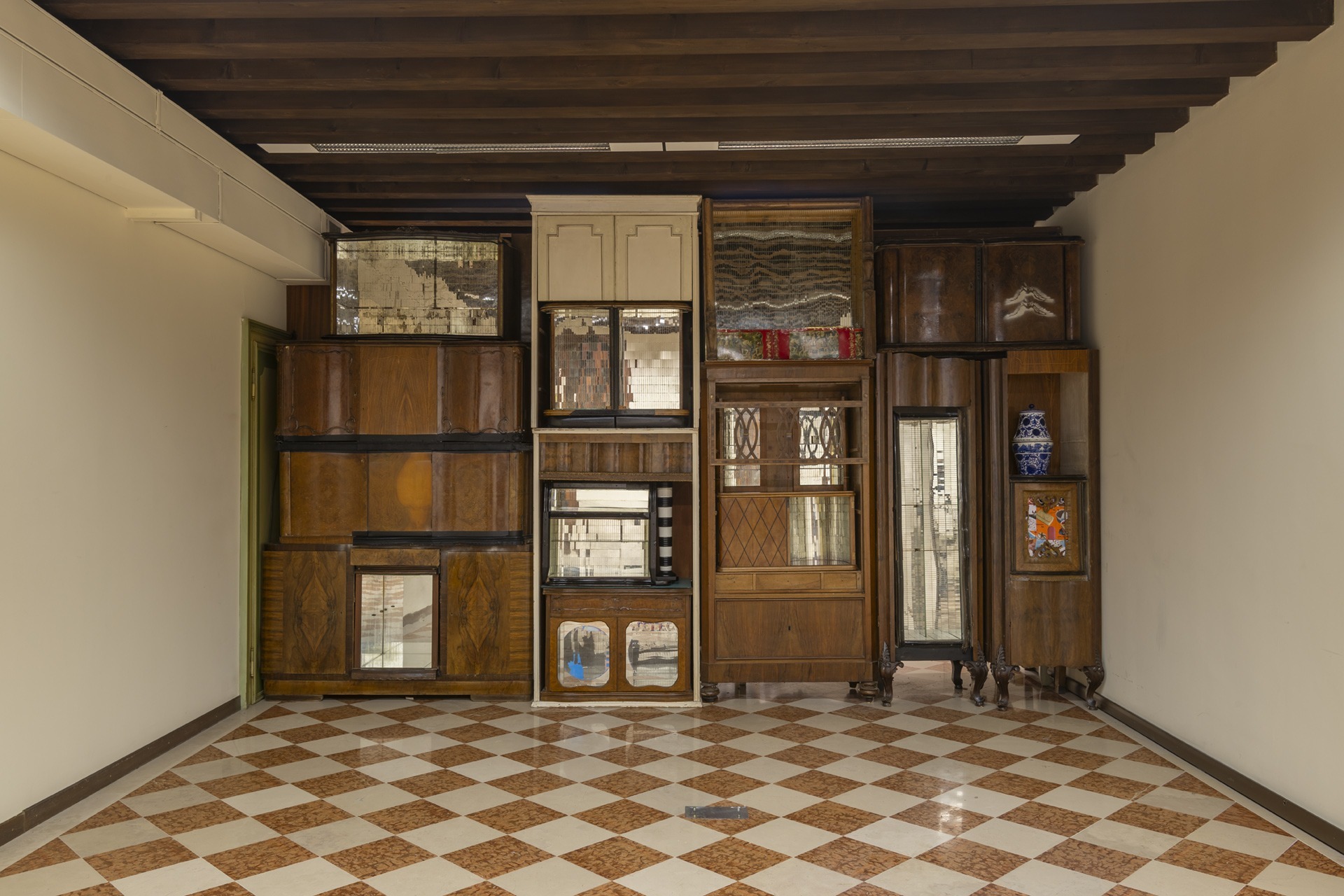
Rossella Farinotti
November 2025
We meet Rossella Farinotti, curator of ‘Portofranco’, the latest initiative promoted by the Municipality of Castelfranco Veneto which breathes new life into the disused spaces of Palazzo Soranzo Novello in the heart of the Venetian town.
Open until 14 February 2026, the exhibition features 23 artists and five special projects in spaces that have been reopened to the public. We met with her to discuss the project and its impact.
Let’s start with the name of the exhibition: ‘Portofranco’. Where does it come from, and what did you want to convey with this title?
The title comes from Castelfranco Veneto’s historical roots as a free port during the Middle Ages. The area inside the walls was a tax-free zone. The project therefore started with work on the territory, adopting this term and writing it as one word: ‘Portofranco’. The utopian idea is that this place is a free port today — not in an economic sense, but in terms of ideas without borders or limits. It is a place where, thanks to artists’ visions, we can return to a free, open space in which we can express our ideas freely and unite our thoughts to create a ‘free port’, a point of reference for the cultural world.
The history of Palazzo Soranzo Novello, the venue for the exhibition, is multi-layered. First the residence of the noble family Soranzo, and later on of Novello. In 1976 it became a bank; it is this change that led to the renovation of part of the building. After Banca Popolare di Castelfranco Veneto went bankrupt in the 2017 crash that sank several banks in the area, in 2021 the municipality took over the building with the aim of finally turning it into a civic museum. The troubled history of the financial crash and the dual nature of the building are topics covered, as are the furnishings left behind after the building was sold. What inspired the artists in this context, which is so rich in events? How was it incorporated into the site-specific interventions designed for ‘Portofranco’?
It has inspired artists in many different ways and fired their imaginations. Many have depicted this place, sometimes in great detail. We invited all the artists who were able to come and visit the space, and we showed them a seminal work: Daniele Costa’s video Tenuto Immerso, which captures the building’s state and atmosphere very well. Some furnishings remained, as in the work of SC_NC, an artistic duo who held a mini-residency here. They rearranged the rooms according to their own vision, adding rubble and objects they had found outside Castelfranco during their explorations. Their idea was to work on memory, but also to document the scars of the past that can be seen here. They have re-established a relationship between interior and exterior, and between past and present, through residues. With Zoe Williams, we chose sculptures to evoke the past, as in the dialogue between her Gorgon sculpture and the 18th century stuccoes, imagining what might have been in that ballroom. Goldschmied & Chiari presented three landscapes screen-printed on mirrors that recall Giorgione’s skies. Each piece references both the location in which it is displayed and the Veneto region.
Sticking with the theme of space, the Palazzo is clearly divided into two distinct sections, separated by a notable stylistic divide. On one side are late 18th century Rococo stuccoes and frescoes, while on the other are false ceilings, glass walls and 1970s wood panelling. What impression did it give you when you first visited? How did you navigate a space that, at first glance, seemed so labyrinthine?
Yes, ‘labyrinth’ is the perfect word to describe the space. It took us months to get used to these spaces. Right from the start, for example, I imagined Duane Hanson’s work, which is displayed on the first floor. It looks real, but when you get closer, you realise it isn’t. We worked on the idea of spatial and temporal disorientation. We didn’t use all the rooms in the building — about 80%, I would say — so you go in and out of offices and various floors. This creates a sense of disorientation, which is reinforced by the juxtaposition of different styles. Many artists are represented in both parts of the building. Silvia Negrini, for example, has created inlaid canvases that echo the patterns of the different styles, for example when she paints the Rococo floor, but we hang it in the 1970s section.
The exhibition showcases a variety of poetic approaches: the element of nature is evident in the works of Fabio Roncato and Silvia Mariotti. The works of SC_NC, Silvia Negrini, Marta Ravasi and Agnese Guido explore urban decay and the memories of objects, as does Daniele Costa’s video. Then there is the reworking of memory and the sense of loss in the works of Favelli and Zanetti, as well as the irony of Cattelan, Braida and Schultz. These themes are traced throughout the exhibition. What will you take away from ‘Portofranco’? What mood do you think it leaves visitors with?
Starting from a sense of disorientation, the idea was to leave feeling enriched, however banal that may sound. When you visit an exhibition, you cannot ignore what you have seen, so we tried to create the disorientation you need to find your way again. I am thinking of the last piece you see, Scacciapensieri by Anna Galtarossa. Anna is from Verona and experienced the financial crash firsthand. While she was there, she fell ill. She tried to exorcise those negative forces with this piece, the production of which was very demanding, even though it looks a bit ramshackle. All the elements are hand-sewn and assembled on site, and are designed to absorb our negative thoughts. The idea is that you feel as though you have unburdened yourself, yet have also been enriched by the artist’s imagination, which was our hope.
We were actually afraid of not being fully understood, but the people of Castelfranco, who came in large numbers, were curious and open-minded. As you mentioned, the irony in Braida can be perceived, as it can in Schulz or Cattelan, even if it is jarring.
Finally, I have one more question about methodology. What were the biggest challenges and problems you faced when bringing a contemporary art project to a context like that? How did you avoid imposing a project from above that was detached from the territory and its population?
It wasn’t easy. However, we had the full support of the public administration and the help of two locals: Daniele Costa and Lisa Rebellato, who initially contacted me about this project. We did a thorough job in schools and with company managers, who then helped us. Our aim was to gently recover the memory of the place and restore possibilities with the help of artists. In the months leading up to the project, we discussed it and described the place from a more neutral, outside perspective. We did some preparatory work, including with the artists who worked in the building. We also involved local collectors, as there are many of them in the Veneto region. However, the fundamental concept was to establish a large team that would collaborate closely.
PHOTO CREDITS
Palazzo Soranzo Novello (external), courtesy by Comune di Castelfranco Veneto and Museo Casa del Giorgione
SC_NC, installation view PORTOFRANCO, curated by Rossella Farinotti, Palazzo Soranzo Novello, Castelfranco Veneto, ph. Cosimo Filippini
Zoe Williams, installation view PORTOFRANCO, curated by Rossella Farinotti, Palazzo Soranzo Novello, Castelfranco Veneto, ph. Cosimo Filippini
Goldschmied & Chiari, installation view PORTOFRANCO, curated by Rossella Farinotti, Palazzo Soranzo Novello, Castelfranco Veneto, ph. Cosimo Filippini
Duane Hanson e Guido Guidi, installation view PORTOFRANCO, curated by Rossella Farinotti, Palazzo Soranzo Novello, Castelfranco Veneto, ph. Cosimo Filippini
Silvia Negrini, installation view PORTOFRANCO, curated by Rossella Farinotti, Palazzo Soranzo Novello, Castelfranco Veneto, ph. Cosimo Filippini
Maurizio Cattelan, installation view PORTOFRANCO, curated by Rossella Farinotti, Palazzo Soranzo Novello, Castelfranco Veneto, ph. Zeno Zotti, courtesy Maurizio Cattelan’s Archive
Silvia Mariotti, installation view PORTOFRANCO, curated by Rossella Farinotti, Palazzo Soranzo Novello, Castelfranco Veneto, ph. Cosimo Filippini
Fabio Roncato, installation view PORTOFRANCO, curated by Rossella Farinotti, Palazzo Soranzo Novello, Castelfranco Veneto, ph. Cosimo Filippini
Anna Galtarossa, installation view PORTOFRANCO, curated by Rossella Farinotti, Palazzo Soranzo Novello, Castelfranco Veneto, ph. Cosimo Filippini






















